British Army Apache helicopters have conducted live fire exercises in Finland as part of Exercise Mighty Arrow 25.
The exercise, designed to enhance NATO’s collective defence capabilities, involves British and Finnish forces working closely to improve interoperability and combat readiness.
The British Army’s 3 Regiment Army Air Corps shared updates on social media, showcasing the firepower of their Apache attack helicopters, emphasising the motto: “Train together, fight together, win together.”
The regiment, known for operating the AH-64E Apache, is part of the Army’s high readiness aviation task force, prepared to deploy quickly and deliver decisive attack aviation support.
The Panssariprikaati (Armoured Brigade) of Finland also posted about the live fire training, noting that the exercise is in “full action mode.” According to their update, the event reflects the importance of well-trained soldiers and cohesive multinational operations, underscoring NATO’s commitment to maintaining a robust defensive posture on the alliance’s eastern flank.
Exercise Mighty Arrow 25, part of Operation Razoredge, brings together troops from multiple NATO countries to practice integrated defence in the Baltic region. The operation aims to demonstrate allied solidarity and readiness to respond to potential threats in Northern Europe.
The Apache helicopters engaged in coordinated fire missions alongside Finnish armoured units, reinforcing joint operational capabilities.
Open fire 🔥
– train together ✅
– fight together ✅
– win together ✅ #attack #strongertogether #razoredge #MightyArrow25 #wearenato @Maavoimat @ArmyAirCorps https://t.co/lWxDvUhumY— 3 Regiment Army Air Corps (@3RegimentAAC) May 11, 2025
The Apache
The British Army’s AH-64E Apache Guardian represents a significant advancement in the UK’s rotary-wing attack capabilities, replacing the earlier AH Mk1 fleet. Developed by Boeing, the AH-64E is designed for enhanced performance in modern combat scenarios, featuring improved sensors, communications, and weapons systems. The helicopter is powered by two General Electric T700-GE-701D turboshaft engines, enabling a maximum speed of approximately 330 km/h (205 mph) and a range of up to 500 km (310 miles). Its advanced avionics suite includes a modernised Target Acquisition Designation Sight/Pilot Night Vision Sensor (TADS/PNVS), providing superior target detection and engagement capabilities.
The AH-64E is equipped with a 30 mm M230 chain gun, capable of firing up to 650 rounds per minute, and can carry a combination of AGM-114 Hellfire missiles and Hydra 70 rocket pods on its four hardpoints. Notably, the AH-64E can control unmanned aerial vehicles (UAVs), allowing pilots to extend their reconnaissance and targeting reach. The integration of advanced systems enables the helicopter to identify and prioritise multiple targets simultaneously, enhancing battlefield effectiveness.
As of early 2025, the British Army has completed the acquisition of 50 AH-64E helicopters, with the final unit accepted at Boeing’s manufacturing facility in Arizona. These helicopters are based at Wattisham Flying Station in Suffolk, serving as the primary attack aviation platform for the Army Air Corps.



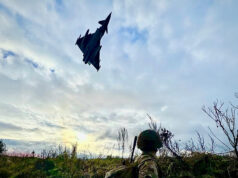
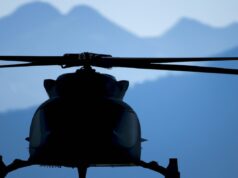
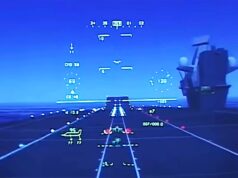
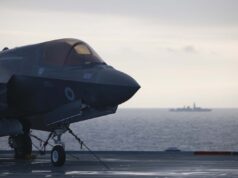
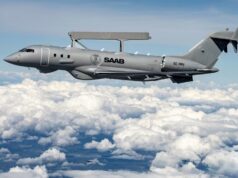
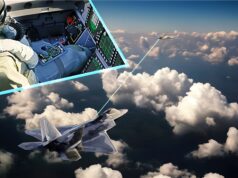
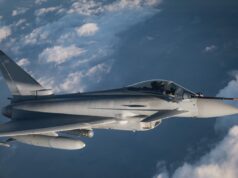
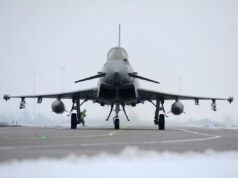
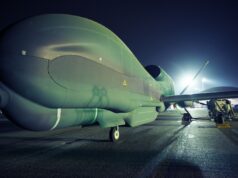


Great to see them flying, even if they are a bit Fin on the ground.
“Per densissima et tenus”.
I guess the key question we should be able to answer is are attack helicopters still viable over a contested battlefield zone? Eg does the Apache with the training our pilots have and the aircraft being a better platform then Russian attack helosmean the Apache is viable? If so then we should order more, if not then can we make the platform more viable by suppressing drones and GBADs or via enhanced self defence suite?
The MOD should be able to answer that and ensure Apache remains a viable close air support and anti armour platform.
I think more Apache would be one great way to increase the Army’s lethality and firepower without drastically increasing personnel numbers.
I expect Dern will have better knowledge of Russian air asset losses, but on 26 Jan this year Lisa West published figures on UKDJ:-
“The skies have also been costly for Russia, with Ukrainian defenders bringing down 369 planes and 331 helicopters since the start of the war. Meanwhile, 23,213 UAV’s” Figures from Oryx
ManPads and drones have made it impossible for either side to establish air superiority and neither side can provide close air support within 10km of the front lines. Equaly, it’s possible that our 50 new Apache helicopters would not last long
I actually do not know the Russian Helicopter loss rate off the top of my head (though thanks for the vote of confidence), but I will point out that one of the major issues that Ukraine faced in it’s Tokmak offensive where KA-52 strikes. So my gut feeling would be that attack helicopters are vulnerable, and their employment needs to be considered and careful, but that there very much is a place for them.
Ukraine also continues to use it’s Hinds in a IDF role, but I’m not sure how effective lobbing unguided rockets in ballistic arcs at enemy positions actually is.
I think the space to watch is the US Army Aviation. From the little I understand the US and UK Helicopter doctrine is very different, we tend to see Apache’s as a fire support platform that enables manuever, while the US doctrinally sees it’s Attack Helicopters as a manuever arm in it’s own right.
To increase the Apache’s lethality, especially against drones. If it’s armed with advanced precision kill weapons system (APKWS). Which are 70mm Hydra rockets with a semi-active laser seeker kit added. As has been proven by US F16s and other aircraft, an Apache so armed would make a great drone killer. Though it is a bit slow, so can only really dominate the local area. Perhaps this should be sufficient to nullify the local drone threat?
OT, but hopefully of interest. I’ve just found out that Parliament goes into Whitsun Recess on 23rd May….so perhaps that means SDR will be released on 22nd May, so there is no time to debate any awkward conclusions! Its a standard HMG ‘trick’.
Morning Graham.
That’s long been predicted.
Some might be at their Whit’s end after that.
“A good day to bury bad news”.
Probably right, although the chances of a release and run are fleetingly small. HMG must know that because they have delayed the publication and keep referring to decisions being made in the SDSR on armed forces equipment and personnel levels (in order to dodge any difficult discussions about the god awful state the Tories left the country in) that they wont be allowed the excuse of publishing and then going off on holiday. There is also the small matter of the NATO summer conference on 24-26th June which will put a spotlight on national defence programmes and expenditures, but more crucially deployable force levels and readiness.
One thing is for certain SDSR will have to really be an explosive go big effort otherwise it is going to be called a fudge and quite rightly so.